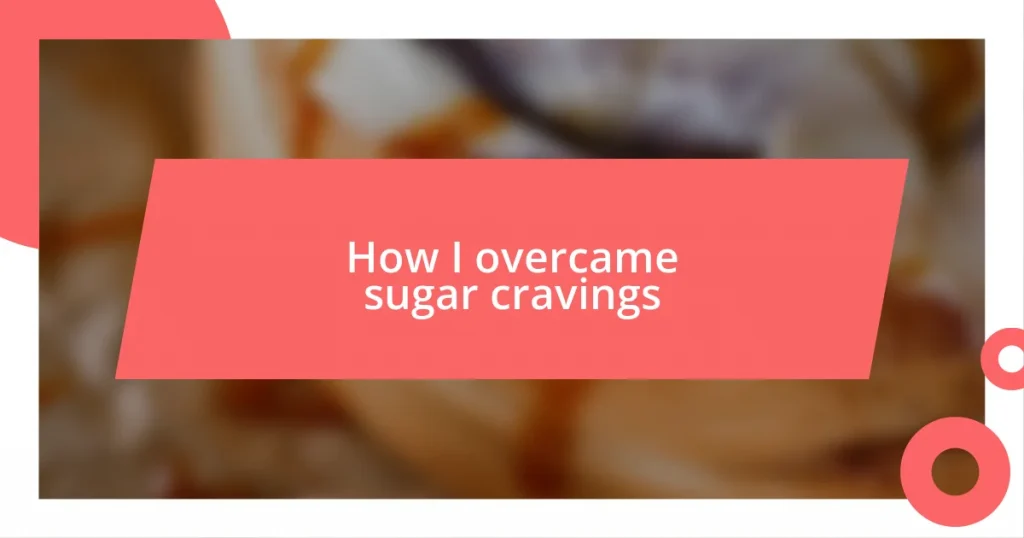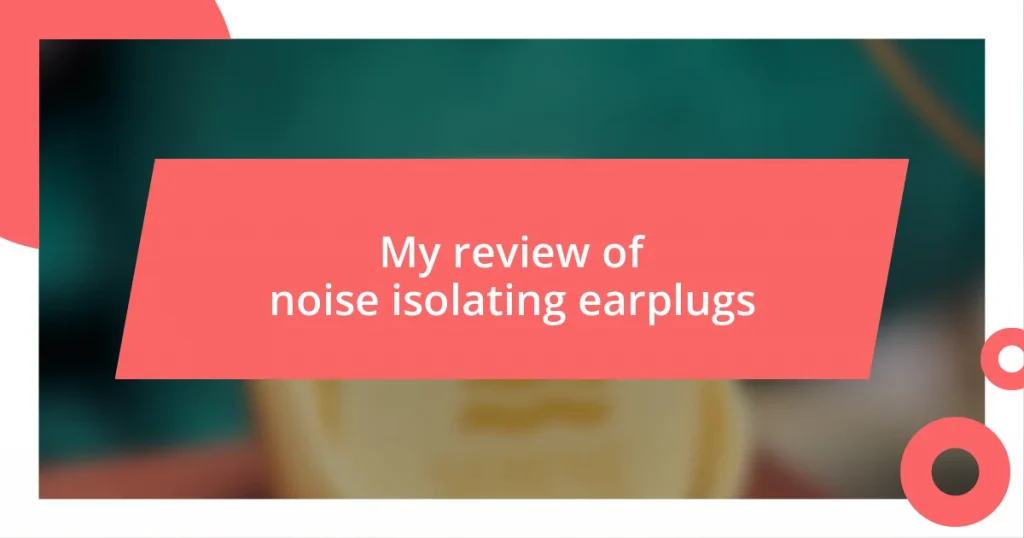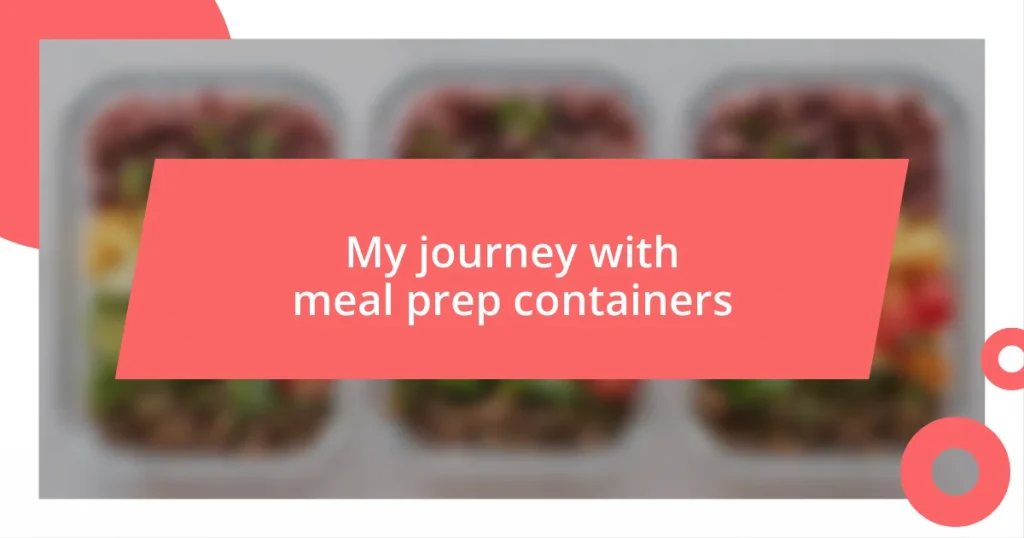Key takeaways:
- Understanding the connection between sugar cravings and emotional states can help manage intake more effectively.
- Identifying triggers and utilizing healthy alternatives, like fresh fruits and mindful eating, can significantly reduce sugar cravings.
- Building a support system and meal prepping are essential strategies for maintaining long-term sugar reduction.
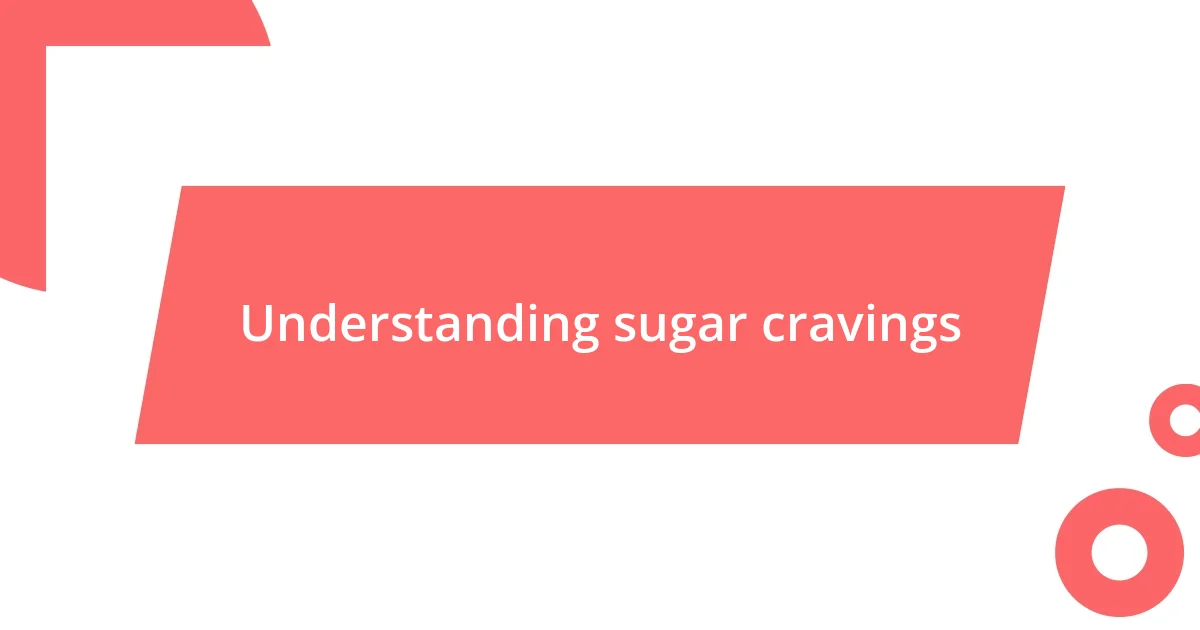
Understanding sugar cravings
Sugar cravings can often feel like a relentless tide that crashes over us at the most inconvenient moments. I remember those late afternoons when work felt unbearable, and I found myself reaching for anything sugary just to get a boost. It’s interesting to realize that these cravings are not merely about wanting something sweet; they’re often linked to emotional states like stress or fatigue.
Have you ever noticed how certain situations seem to trigger these cravings? For me, it was always during stressful weeks. I sought comfort in sugary treats, convinced they would provide a quick fix. This made me recognize that my cravings weren’t just physiological, but tied to my emotional well-being. When I finally understood this connection, it lit a different path for managing my sugar intake.
I’ve come to learn that our bodies sometimes crave sugar as a response to a dip in energy or mood. It’s a fascinating dance between the mind and body. For instance, when I’m tired, I find myself daydreaming about chocolate bars or sugary snacks. This realization has been empowering, showing me that instead of surrendering to these cravings, I can choose healthier ways to nourish myself. What if we could reframe these moments not as weaknesses, but as opportunities to explore our true needs?
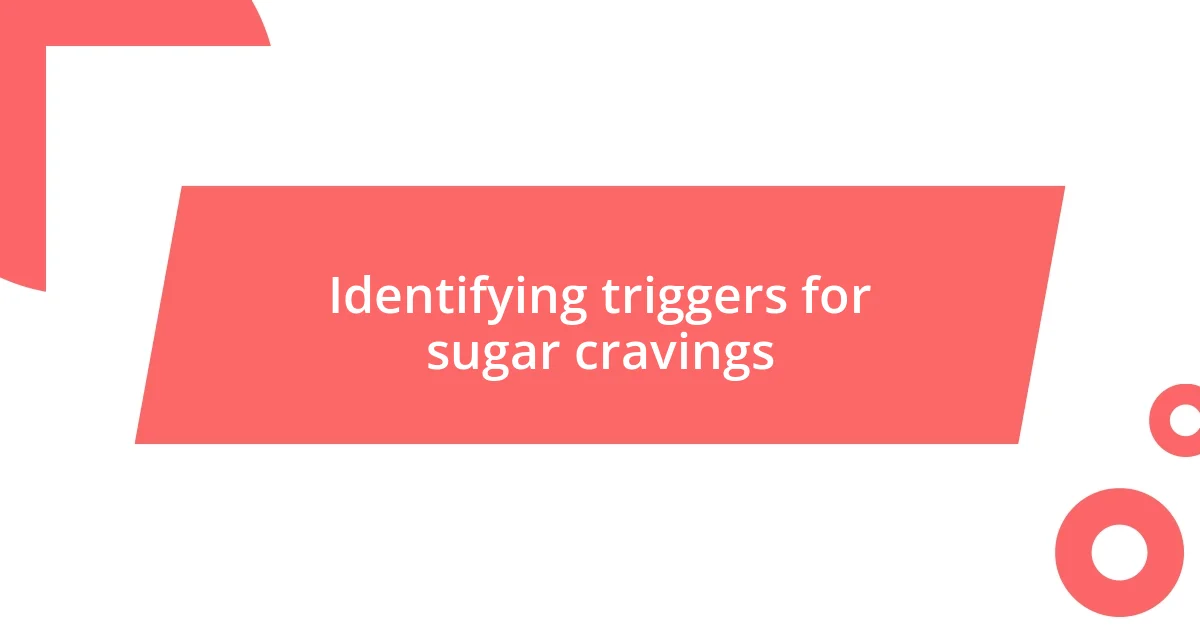
Identifying triggers for sugar cravings
Just like many of you, I’ve had my share of moments where sugar cravings seem to pop up out of nowhere. One morning, I vividly remember pouring my coffee, only to be hit with an intense urge for a donut after scrolling through social media. It struck me that certain environments or activities—like browsing food photos or passing by a bakery—could easily ignite those cravings. The realization that my surroundings could influence my appetite helped me become more mindful of my choices.
Identifying triggers can be crucial to managing sugar cravings effectively. Here are some common culprits you might notice in your own life:
- Emotional States: Stress, boredom, or anxiety can prompt cravings for comfort foods.
- Environmental Cues: Being around certain foods or engaging in specific activities can spark cravings.
- Physical Fatigue: Feeling tired often leads to a desire for quick energy sources, like sugary snacks.
- Social Situations: Celebrations or gatherings where sweets are abundant can make cravings hard to resist.
Recognizing these patterns in your behavior can empower you to make healthier choices in the face of cravings.
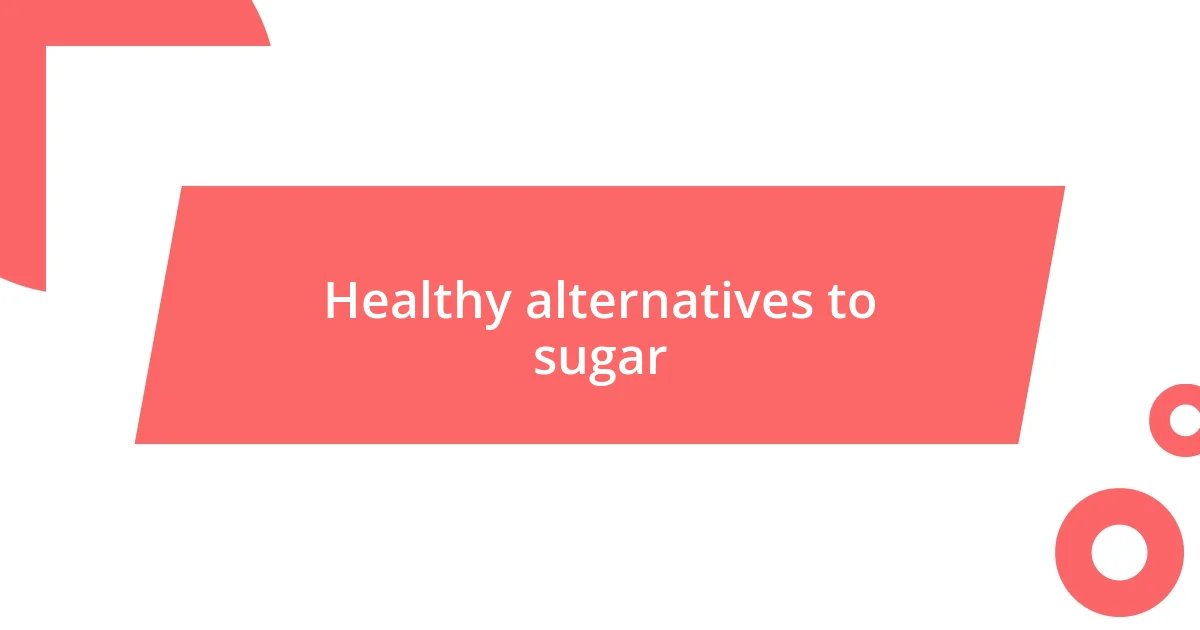
Healthy alternatives to sugar
When I began my journey to reduce sugar, I discovered a world of healthy alternatives that not only satisfied my cravings but also nourished my body. For instance, I replaced sugary snacks with fresh fruits like berries or apples. The natural sweetness of these fruits, combined with their fiber content, kept me full and satisfied without the sugar crash. It was almost like discovering new flavors hidden within familiar foods!
Another great alternative I found is unsweetened applesauce. I started using it in my baking instead of sugar, which added moisture and a subtle sweetness. In my experience, it’s remarkable how using natural ingredients can transform favorite recipes. Plus, swapping out those refined sugars not only made my treats healthier but also allowed me to experiment with new tastes and textures I hadn’t considered before.
You might also want to try sweeteners like stevia or monk fruit. They’re both plant-based and much sweeter than sugar, meaning you can use less while still achieving that desired sweetness. I have found that it takes a little getting used to, but now I actually prefer these alternatives. They’ve helped me strike a balance between enjoying my favorite flavors while staying committed to my health goals.
| Alternative | Benefits |
|---|---|
| Fresh Fruits | Natural sweetness, rich in fiber, low in calories |
| Unsweetened Applesauce | Moisture in baking, low-calorie alternative to sugar |
| Stevia/Monk Fruit | Plant-based, zero calories, much sweeter than sugar |
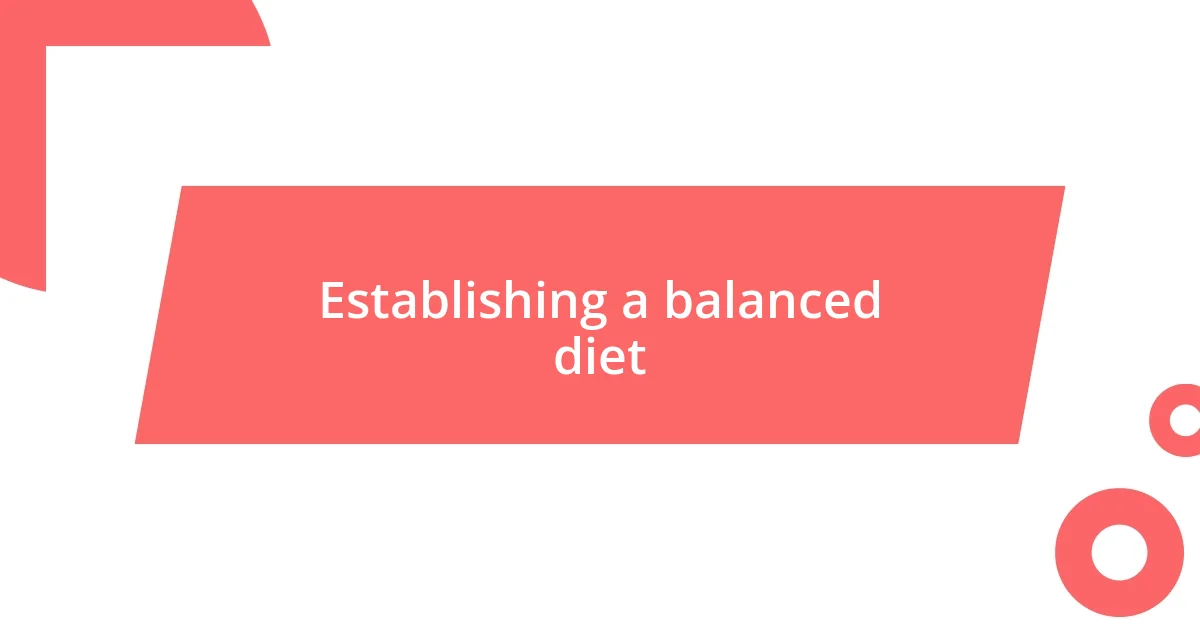
Establishing a balanced diet
Establishing a balanced diet has been a pivotal part of my journey to overcome sugar cravings. I still recall how just adding a variety of whole foods into my meals transformed not only my palate but also my mindset. For instance, incorporating colorful vegetables and lean proteins helped me feel more satisfied after eating, which reduced my cravings significantly—who knew that a simple plate could make such a difference?
I remember the first time I consciously balanced my meals. I paired grilled chicken with a kale salad and quinoa. It was such a shift from my usual meals dominated by quick carbs. The way I felt afterward—full yet energized—was a revelation. It got me thinking, why did I ever reach for those sugary snacks when wholesome foods offered so much more? You see, understanding that food is fuel redefined my relationship with what I eat, prompting me to seek that balance actively.
Mindful eating plays a huge role too. I noticed that when I took the time to savor each bite, such as fully enjoying a hearty vegetable stew, I felt more fulfilled and less likely to crave something sweet afterwards. Honestly, have you ever paid attention to how delicious real food can be? Emphasizing nutrient-rich foods naturally curbed my cravings, making my meals not only healthier but also more enjoyable.
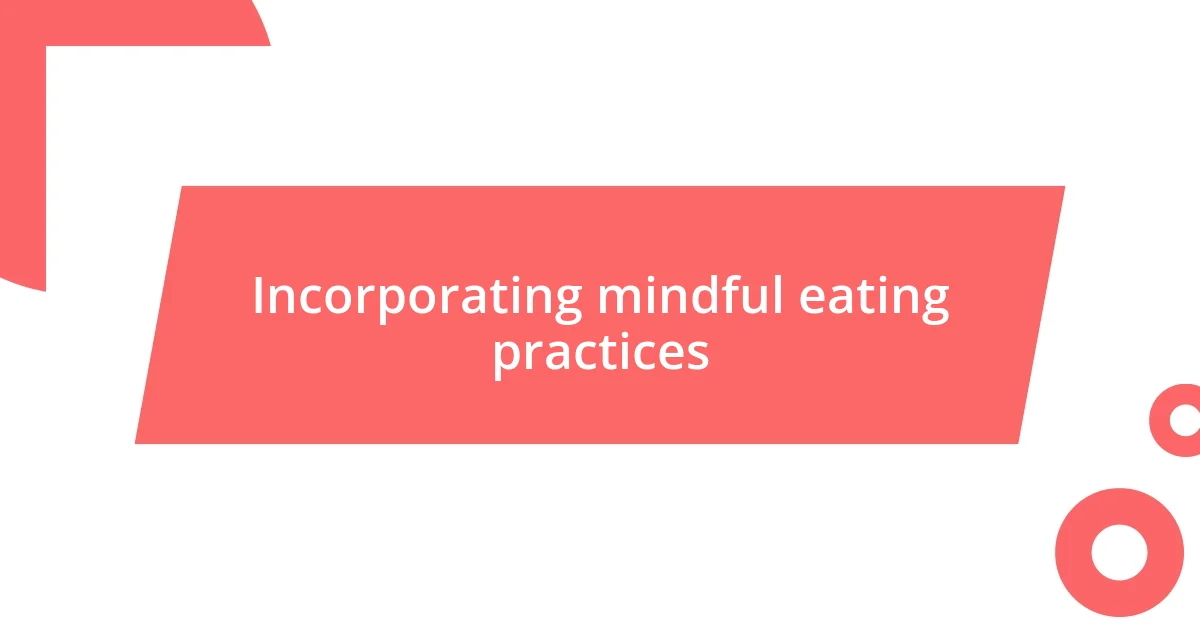
Incorporating mindful eating practices
Eating mindfully has become a game changer in my life. I remember the days when I would mindlessly snack while watching TV, often reaching for something sweet without even realizing it. Now, I set aside dedicated time for my meals, savoring each bite. Interestingly, I’ve noticed that this simple act allows me to actually enjoy my food more, and as a result, I don’t find myself searching for sugary treats after a meal anymore. Have you ever experienced that moment where you genuinely appreciate your food? It’s liberating!
When I focus on the taste, texture, and aroma of my meals, I realize just how satisfying a dish can be without added sugars. There’s something about slowing down that enhances the overall experience. For example, a creamy avocado toast topped with cherry tomatoes becomes a feast when I take the time to relish each bite. Much like a good book, every taste has a new chapter, revealing layers of flavor that quick meals simply can’t offer. Don’t you think we deserve to allow ourselves that pleasure?
Additionally, I took up the practice of tuning into my body’s hunger cues. I remember one afternoon feeling a slight pang in my stomach, which would have sent me straight for sweets in the past. Instead, I paused and asked myself if I was genuinely hungry or just bored. This self-reflection became a vital step in my journey. By paying attention, I learned to distinguish between real hunger and craving, which helped me make better choices—and it felt empowering, almost like I was reclaiming control over my eating habits. Isn’t it amazing how a small shift in awareness can make such a significant impact?
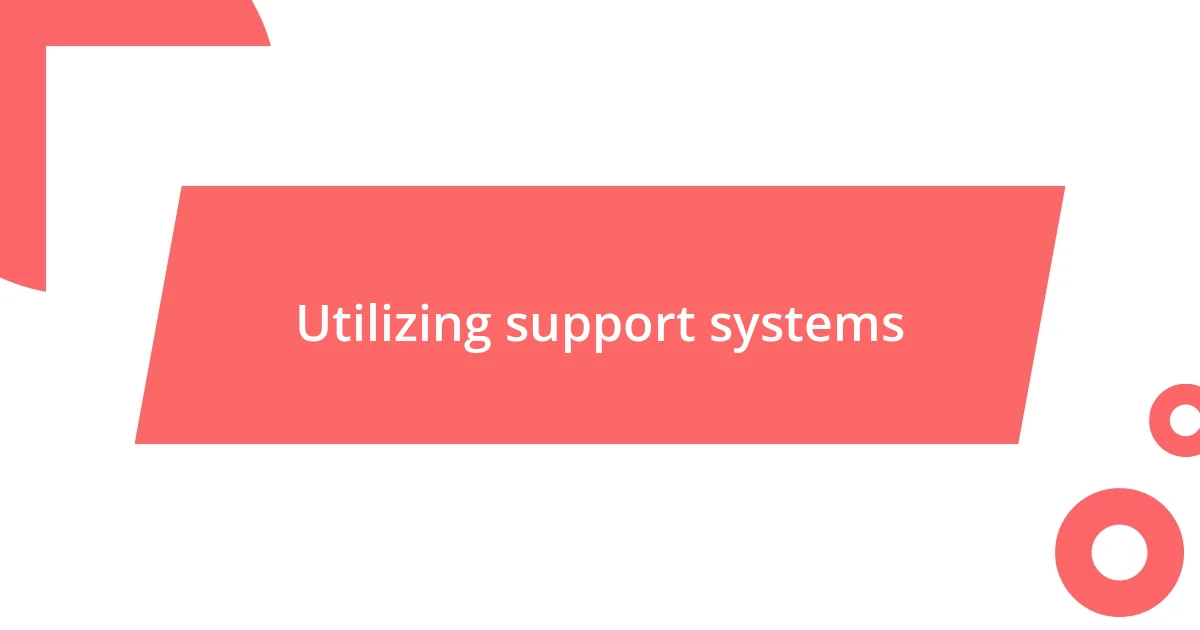
Utilizing support systems
Utilizing a support system can be a cornerstone in overcoming sugar cravings. I remember reaching out to a close friend who shared similar health goals. We became accountability partners, checking in with each other regularly. Having someone to share our struggles made a significant difference. It’s like having a cheerleader on days when my motivation waned. Have you ever found strength in community? I truly believe we can lift each other up.
In addition to my friend, I joined a local wellness group. I was surprised by how many people were dealing with the same craving challenges. Listening to their stories not only helped me feel less isolated but also sparked helpful conversations about healthier alternatives to sweets. I recall one meeting where someone suggested trying fruit-infused water—what a delightful shift that was! It felt great to swap ideas and discover that I wasn’t alone in this journey.
I also leaned on social media to connect with a wider audience. There are countless groups dedicated to overcoming sugar cravings where I found inspiration through shared recipes and success stories. Just scrolling through uplifting posts gave me the nudge I needed on tough days. It’s incredible how fostering connections with others can empower you to process your cravings. Isn’t it comforting to know that there’s a community out there ready to support you?
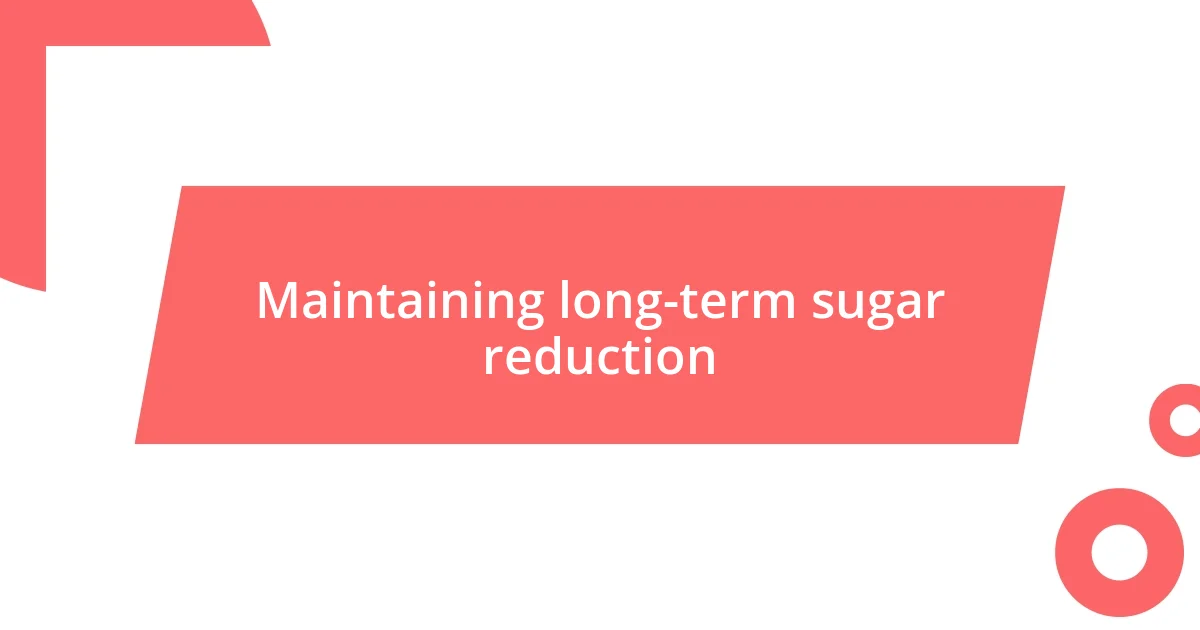
Maintaining long-term sugar reduction
Maintaining long-term sugar reduction is definitely a journey, not just a destination. For me, staying committed meant continually reminding myself of the benefits I was experiencing. I vividly recall the moment I noticed how my energy levels soared after cutting back on sugar; I felt lighter and more focused. Isn’t it remarkable how our bodies respond once we begin treating them well?
One strategy that I found effective was replacing sugary snacks with healthier alternatives. I started preparing homemade energy balls using oats, nut butter, and a touch of honey. The first bite was an eye-opener—I was amazed that a simple combination could satisfy my sweet tooth without the sugar crash. Don’t you think it’s empowering to discover that delicious options exist that don’t rely on processed sugars?
Lastly, I embraced the art of meal prepping. Setting aside a few hours each week to plan and prepare my meals brought me a sense of control and predictability. I recall one Sunday where I crafted a batch of savory veggie muffins and froze them for quick breakfasts. It not only saved me time during busy mornings but also kept me away from those tempting sugar-laden options. How satisfying is it to know you’ve set yourself up for success ahead of time?










